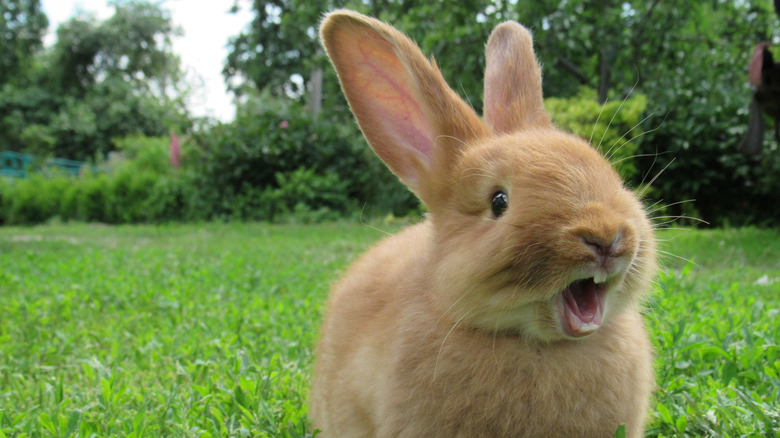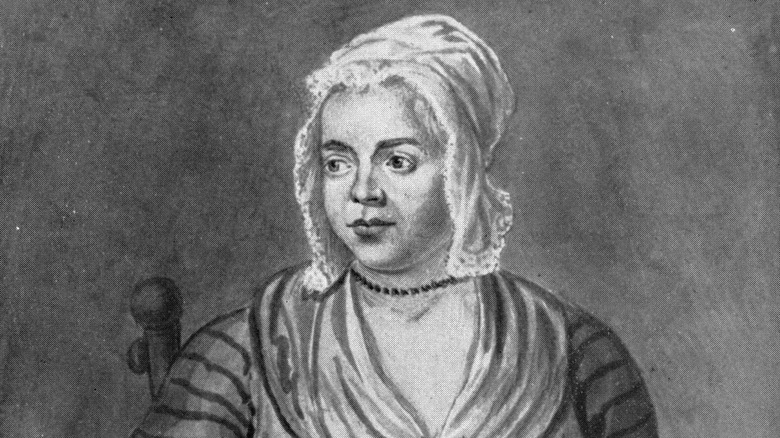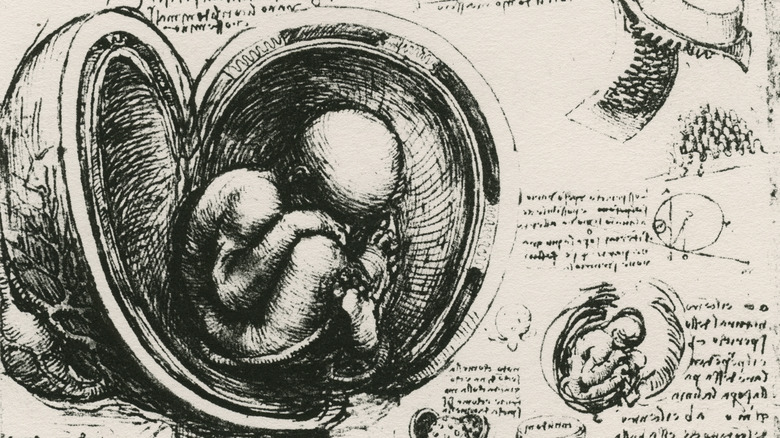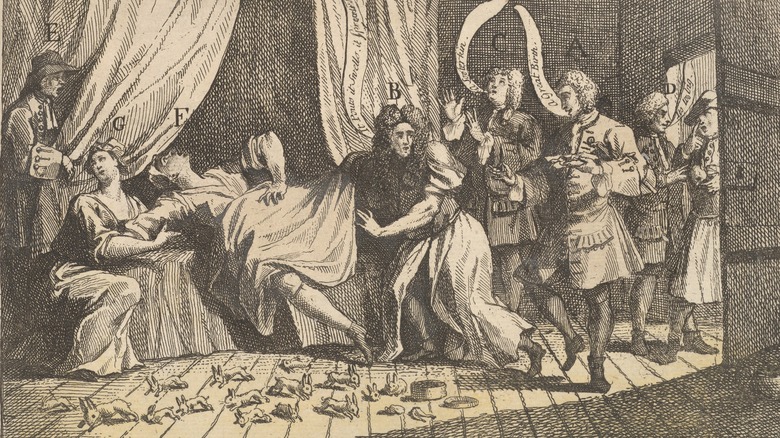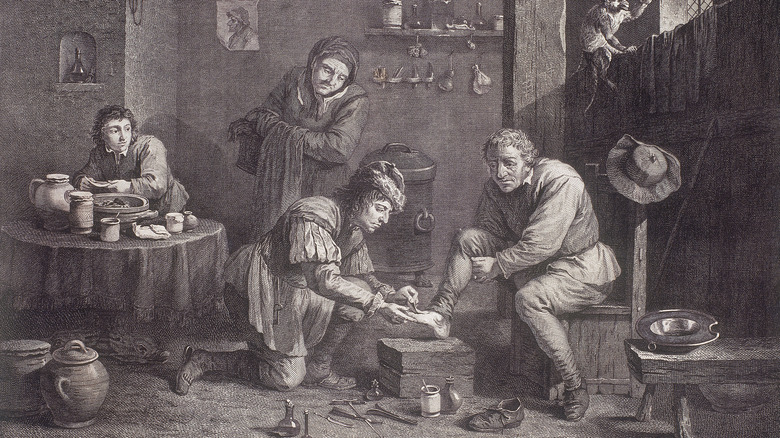The Bizarre True Story Of The Woman Who Claimed To Give Birth To Rabbits
For a few months in late 1726 or early 1727, the British medical and academic communities were obsessed with a peasant woman who made an extraordinary claim: She had given birth to rabbits. Due to the combination of the state of medical knowledge at the time — a haphazard combination of real anatomical knowledge combined with folklore, superstition, and wishful thinking — her claim was taken seriously by more than one person who should have known better. Word of her claim even reached the court of King George I. Meanwhile, the British public swore off rabbit meat for a time.
Of course, it is physiologically impossible for a human to give birth to a rabbit, so her hoax was found out in due course. By that time, however, several careers were irreversibly damaged, the medical community had become a laughingstock, and the woman who perpetrated the hoax would wind up in jail.
That the lives of rural peasants in 18th-century England were miserable and poverty-stricken hardly needs explaining. And Mary Toft was one of untold numbers of impoverished, illiterate peasants toiling the English countryside, who considered it a good day if they got enough to eat. This is the bizarre true story of the woman who claimed to give birth to rabbits.
Mary Toft was a peasant woman who was always this close to starvation
According to The Paris Review, in April 1726 Toft (above) was pregnant and working the fields one day when she saw a rabbit. She tried to catch the critter, thinking its meat would supplement whatever meager rations she might expect to eat that day. The rabbit escaped, but from that day on, all Mary could think about, day after day, was rabbit meat. The obsession with rabbits continued throughout her pregnancy, she would later confess, as she imagined rabbit meat — meat which she could never afford and was unlikely to ever eat — in all of its forms, someday winding up on her plate.
In August, Toft miscarried, according to Atlas Obscura. A month later, a prominent local obstetrician would claim that Mary had ejected non-human animal parts from her body. On September 27, 1726, according to the University of Glasgow, Toft experienced symptoms of labor. Attended by her neighbor and her mother-in-law, her body ejected what was described at the time as something not unlike a "liverless cat." In fact, what Toft had ejected from her body was almost certainly a bit of malformed placenta. The next day, local midwife John Howard was brought in to observe things.
A medical misunderstanding begins
Howard would later say that he witnessed Toft eject various animal parts, such as something resembling a pig's bladder, a cat's paw and head, and then, one after the other, rabbits, according to The Paris Review. Howard reportedly pickled the specimens and kept them in jars in his study.
Over the next several days, according to the University of Glasgow, Howard would observe as Toft reportedly "gave birth" to "three legs of a Cat of a Tabby Colour, and one leg of a Rabbet: the guts were as a Cat's and in them were three pieces of the Back-Bone of an Eel," according to Atlas Obscura. Howard then began sending letters to prominent British physicians, telling them about what he'd reportedly witnessed.
Among the men Howard had written to was the secretary to King George I, according to Atlas Obscura. The Crown then sent two men to investigate: court anatomist Nathaniel St. André, and Samuel Molyneux, secretary of the Prince of Wales. St. André, who according to The Paris Review was an ambitious climber with a fondness for fine clothing, and who had little to no business being a man of science, apparently fell for the ruse hook, line and sinker. He even took the pickled rabbit specimens back to show to the "dumbfounded" king.
The hoax is revealed
Holes were starting to appear in Toft's claims, however. Examination of one rabbit showed that it had recently digested grass and hay, which would of course be impossible in the human womb. Similarly, some of the specimens appeared to be fetuses, while others appeared to be possibly as old as three weeks. St. André, however, was undeterred by the evidence that a hoax could be afoot.
Toft was eventually brought to London, where she could "give birth to rabbits" under the scrupulous observation of as many as 10 physicians at a time, according to Atlas Obscura. It was in London that Toft's ruse came to an end. When a porter was caught sneaking a rabbit into Toft's room, Mary was eventually pressured into confessing that it had all been a hoax. Toft would later reveal that her co-conspirators would insert the animal parts into her vagina, often at great pain to her, in order to continue the deception.
The London daily papers were indescribably harsh to Toft, as The Paris Review described it, painting her as an immoral, sexually promiscuous woman who tried to rise above her station. Slightly kinder accounts suggested that she'd been used as a tool for her husband's schemes, whatever they might have been. Mary would later claim that she was herself a victim in the whole affair, used as an unwitting pawn by her mother-in-law, who was keen to use the illiterate peasant woman perhaps in a bid to make some quick cash.
Toft's hoax ruined careers
"I think she was just playing the lead role in a performance orchestrated by other people," said University of Birmingham historian Karen Harvey. Toft's protestations did little to satisfy the law, however. She was jailed for perpetrating a fraud, but later released without charge, and effectively never heard from again.
Toft's hoax pitted those scientists and physicians who believed her against those who didn't. The most-visible face on the "pro" side of the column was St. André, who went so far as to publish a 40-page report about Toft's "births." The court anatomist may have himself bought into a belief, common at the time, that "maternal impression" could inform a birth. For example, if a pregnant woman was startled by, say, a fox, then she might later give birth to a baby with various defects related to foxes. When the hoax was revealed, St. André was all but ruined.
The medical community also became the subject of enthusiastic ridicule, according to The University of Glasgow. Satirists skewered the whole affair in essays and cartoons. One satirical piece was titled "The Anatomist Dissected by 'Lemuel Gulliver'," referring to the protagonist of satirist Johnathan Swift's "Gulliver's Travels," parts of which were themselves polemics against the gullibility of academia. Meanwhile, physicians who weren't taken in by Toft's hoax feared that the whole thing damaged the entire medical profession in the eyes of the public.
Aren't scientists supposed to know better?
Certainly this was neither the first nor the last time a hoax was perpetrated that managed to fool the professionals. If the 18th-century physicians who bought into Mary Toft's hoax can be forgiven for acting from an incomplete understanding of science and the scientific method, the same can't be said for 20th- and 21st-century scientists who should know not to accept outlandish claims on face value. Unfortunately, hoaxes continued to bamboozle scientists well after the Toft affair.
In 1989, according to Chemical & Engineering News, two researchers claimed that they were effectively able to invoke cold fusion on a tabletop, and the scientific community was set aflutter. If true, their findings would mean that they'd discovered a limitless source of free, clean energy. In fact, cold fusion is not possible, even in theory, and the entire thing was later revealed to be a hoax. The term "cold fusion" itself "became a synonym for junk science."
